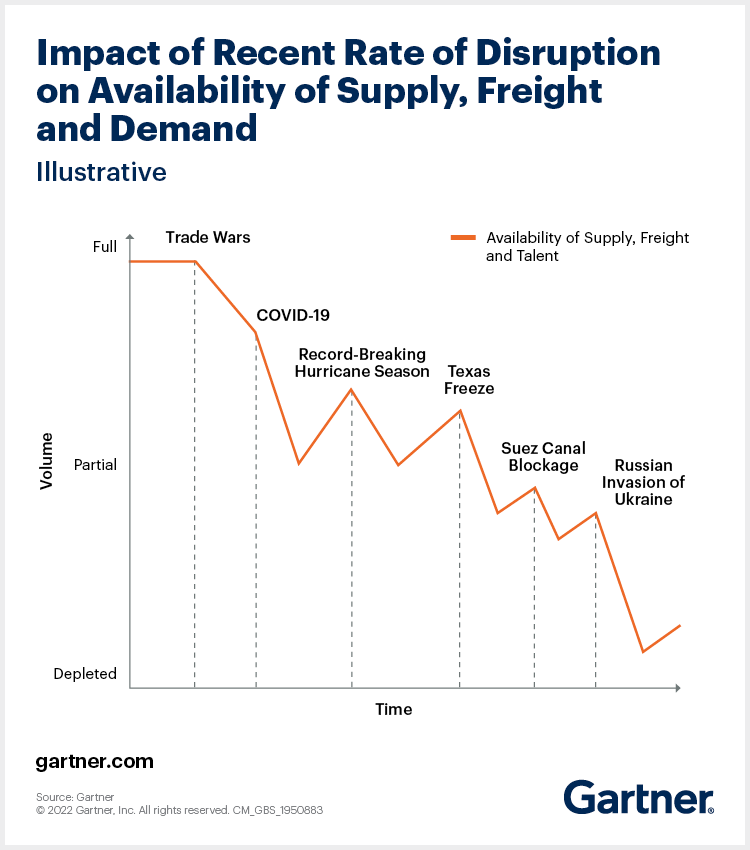These two critical differences change the calculus for supply chain leaders as they prepare for a potential recession. Accordingly, CSCOs must avoid changes in strategic direction based on premature assessments of the duration and depth of the recession, and the likelihood and timing of a full recovery. What supply chain leaders can do is take these three actions to prepare:
- Identify critical resource bottlenecks and use them to guide your cost reduction strategy. In the current environment, many supply chains are struggling to meet demand anyway. The constraints they are experiencing can clarify other decisions about how much raw material and work in progress (WIP) inventory to carry, backup labor to retain or freight partners to secure.
- Redefine the organization’s desired risk appetite to identify strategic decision points. A critical flaw of the supply chain risk management strategy pre-2019 assumed that supply chains would have the ability to recover from any single high-impact disruption before the next one occurred. The past three years have demonstrated how consequential that assumption has been. Supply chain leaders must reevaluate their risk appetite and adjust to a level that is appropriate to the current environment.
- Make decisions based on recession recovery projections only after the supply chain has achieved its target volume. Base those strategic decisions on recession duration and the anticipated rate of recovery for the most severe bottlenecks in the supply chain. The pace of recovery for both critical resources and demand are critical uncertainties.
The most likely scenario is that supply chains will have to shift back and forth between a demand-driven posture and a supply-constrained one, and should continue to monitor its actual volume in relation to target volume.
The big take-away is that a coming recession will be different from past recessions, and supply chain leaders must take a cool-headed approach to their response. Leverage the drop in demand as an opportunity to rebalance demand with supply, ready the supply chain for continued volatility, and base significant shifts in strategy on assessments of both the shape of the recovery and likely rate of recovery for critical resources.


